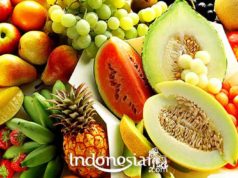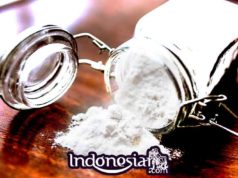Indonesia has a variety of plants that are used as a spice for delicious traditional food. One of the plants that can be used as a traditional food spice is andaliman. Andaliman is a spice plant that is used in almost every traditional Batak food. Andaliman or Zanthoxylum acanthopodium DC is a plant belonging to the citrus family (Rutaceae) with small clusters similar to a pepper or peppercorn. Therefore, andaliman is often referred to as batak pepper by processing it in the form of fresh fruit, mashed or packaged ready to be processed in the form of powder and paste.
The taste of Andaliman is like fresh lemon but leaves a distinctive strong and spicy sensation. There is a bitter, dry, and will give a numb or numb effect to the taste buds of the tongue. The feeling of numbness on the tongue is caused by the presence of hydroxy-alpha-sanshool in the spice, also known as sichuan pepper or Indonesian lemon pepper by Europeans.
According to the Head of the Indonesian Gastronomy Academy, Vita Datau Messakh, it would be better to choose andaliman which is dry, not moist, and has a strong aroma. In order to maintain its quality, Andaliman should be stored in an airtight and dry jar.
In order to incorporate into cooking, Andaliman is usually mashed before being used as spices so that it combines with other spices to complement typical Batak dishes such as arsik fish, dekke na niura, gomak noodles, saksang, and various types of chili sauce. Andaliman is not only used as a main complement to North Sumatra’s cuisine. In Indonesian culinary treasures, some of its relatives, namely weak wood (Z. rhetsa), flower seriawan (Z. nitidum), and karangean (Z. avicennae) are also used as cooking spices. This spice with other names is also found in several cooking spices in East Asian countries such as China, Japan and South Korea. Not only that, because in Tibet, India, Nepal and Bhutan also use reliable in their culinary.
In North Sumatra, andaliman grows wild in the thick forests of Toba Samosir, North Tapanuli, and Dairi Regencies. The andaliman tree with its thorny trunk can thrive at temperatures of 15 to 18 degrees Celsius at an altitude between 1,200-1,500 meters above sea level. This plant can reach a height of 5 meters. Morphologically, Andaliman leaves are scattered, stemmed, compound pinnate with odd leaves, and contain oil glands. The young leaves are green on top and slightly reddish at the bottom
Andaliman flowers grow in the armpits, are limited in compound, the children of the umbrella are compound and they are small in shape. Flat, conical flower base consisting of 5 to 7 free petals. The flowers are pale yellow, androgynous with the number of stamens 5 to 6 pistils at the base of the flower. The color of the anthers is reddish, and the pistil is 3 to 4.
Andaliman plants can be harvested when they are 1.5 years old. If the plant grows well and the flowers are not disturbed by weather conditions, then one stem can produce 5 kg to 7 kg. Almost like a coffee plant, andaliman can continue to produce until the age of 10 to 15 years.
Unfortunately, andaliman is still difficult to cultivate, including to produce quality seeds. Pangihutan, a farmer from Lingga Raja II Village, Pegagan Hilir Subdistrict, Dairi Regency, admits that he still relies on seeds that grow naturally under his mother plant for cultivation. Andaliman is a wild plant so it does not require extra care. Giving chemical or organic fertilizers actually shortens the life of the plants, so they should be allowed to grow naturally.
According to Rienoviar, a researcher from the Center for Agro Industry of the Ministry of Industry in Bogor, West Java, andaliman contains antioxidants in the form of alkaloids, glycosidia, tannins, phenols, flavoids that have the potential to act as natural preservatives and can replace the function of artificial preservatives that are more harmful to the body. In addition, Andaliman fruit powder also functions as an antimicrobial which can inhibit the development of Escherichia coli, Salmonella typhimurium, Bacillus cereus, Staphylococcus aureus and Pseudomonas fluorescens bacteria.
This spice can also be processed into essential oils that contain antioxidant terpenes, such as geraniol, linalool and limonene. In the agricultural and plantation sectors, Andaliman fruit can also be used as an insecticide and inhibits the growth of corn powder pests from the insect Sitophilus zeamais. The fruit also functions as natural vitamins C and E to maintain endurance. In addition, this spice is also able to get rid of the fishy smell even in raw fish.
Are you interested in trying to eat Batak specialties that use Andaliman? Come on, get interesting information and add insight from Indonesiar.com.



































